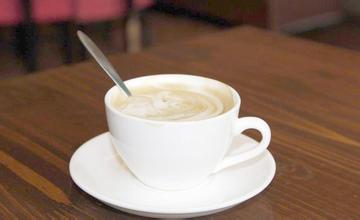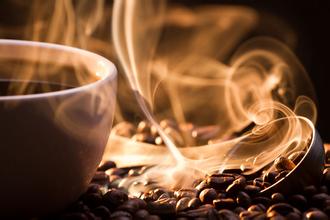Collecting coffee and cherry water washing method-Swiss water washing method for decaf
Collecting coffee and cherry water washing method-Swiss water washing method for decaf
The ripe coffee fruit is put into a machine that scrapes off the skin of the coffee fruit along with the water, and the machine scrapes off most of the pulp of the coffee fruit, but there is still a small layer of pectin to form a mucous membrane glued to the raw bean shell of the coffee. the process of washing is to clean the mucous membrane. Washed coffee beans follow the principle of "do not make mistakes", strangling any factors that may affect the flavor of coffee in the cradle, first discuss fermentation, there are two methods of fermentation, wet fermentation and dry fermentation, as the name implies, the former adds water, the latter does not add water. In the process of fermentation, the seed and internal pulp will produce special changes, which is one of the steps that most affect the flavor of coffee. Let's just talk about wet fermentation.
1. Choose beans:
Put the harvested fruit in a water tank and soak for about 24 hours. At this time, ripe fruit will sink, while immature and overripe fruit will float up and can be removed.
two。 Remove the pulp:
Use a machine to remove the peel and pulp, leaving only coffee beans wrapped in endocarp. At this time, there is a layer of mucous membrane on the outside of the beans, and the process of washing is to wash this layer of mucous membrane.
3. Hair alcohol:
The adhesion of the mucous membrane is very strong and is not easy to remove. It must be placed in the slot for about 18-36 hours to make it alcohol and decompose the mucous membrane. There are two methods of fermentation, namely wet hair alcohol and dry hair alcohol, as the name implies, the former adds water, the latter does not add water. In the process of producing alcohol, the seeds and internal pulp will produce special changes, which is one of the steps that most affect the flavor of coffee. Some farms add hot water or alkanolins to speed up the production of alcohol, which has a negative impact on the quality of coffee beans and is not popular with selected coffee lovers.
4. Washing:
Farms that use the washing method must build washing ponds and be able to introduce an endless supply of running water. During the treatment, the finished beans are put into the pool and passed back and forth, using the friction of beans and the power of running water to wash the coffee beans until smooth and clean.
5. Dry:
After washing, at this time, the coffee beans are still wrapped in the pericarp with a moisture content of 50%. They must be dried to reduce the moisture content to 12%, otherwise they will continue to be mellow, moldy and rotten. The better treatment is to use sunlight to dry, although it will take 1-3 weeks, but the flavor is very good and very popular. In addition, machine drying is used in some places, which greatly shortens the processing time and makes the flavor not as good as that of sun-dried coffee.
6. Shelling:
The dried beans can be stored in a warehouse or handed over to the factory for shelling to remove endocarp and silver film.
7. Selection and grading:
Like tanning hair, washed coffee has a process of picking and grading, which is used to remove defective beans and ensure better quality, which is then handed over to exporters to sell around the world.

Important Notice :
前街咖啡 FrontStreet Coffee has moved to new addredd:
FrontStreet Coffee Address: 315,Donghua East Road,GuangZhou
Tel:020 38364473
- Prev

The skill of making milk foam with coffee mechanism-Nova coffee mechanism for video
Coffee mechanism to make milk foam tips-Nova coffee mechanism video 1, do not put the steam pipe into the milk, because there may be some condensed water vapor in the steam pipe, so you need to put it for a while before preparing to foam. To drain excess water from the tube. 2. Beginners can insert the thermometer into the container, then insert the steam pipe obliquely into the milk, and then turn on the steam switch.
- Next

Italian coffee grinder scale adjustment-how to adjust the thickness of the bean grinder
Italian coffee grinder scale adjustment-how to adjust the thickness of the bean grinder HG one is a brand founded by opera musicians and freelance movie visual effects artists from San Francisco. HG one grinder is their first product. As two laymen from the outside world, they can actually make bean grinders as a professional appliance in the coffee industry as a starting point. I think they
Related
- What brand of black coffee is the most authentic and delicious? what are the characteristics of the flavor of the authentic Rose Summer Black Coffee?
- Introduction to the principle and characteristics of the correct use of mocha pot A detailed course of mocha pot brewing coffee is described in five steps.
- Which is better, decaf or regular coffee? how is decaf made?
- How much is a bag of four cat coffee?
- How about four Cat Coffee or Nestle Coffee? why is it a cheap scam?
- Which is better, Yunnan four Cats Coffee or Nestle Coffee? How about cat coffee? is it a fake scam? why is it so cheap?
- How about Cat Coffee? what grade is a hoax? which instant coffee tastes better, four Cat Coffee, Nestle Coffee or G7 coffee?
- Process flow chart of coffee making-Starbucks coffee making process what coffee tastes good at Starbucks
- The top ten best coffee beans in the world Rose summer coffee or Tanzanian coffee tastes good
- Yunnan four cat coffee is good to drink?_four cat coffee is a big brand? four cat blue mountain coffee is fake?

